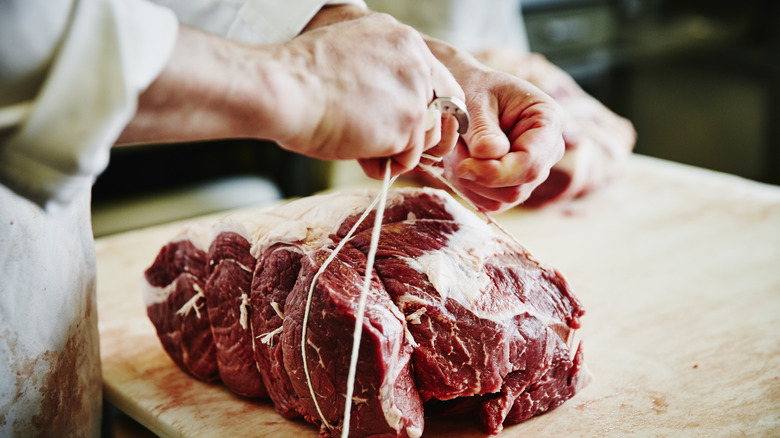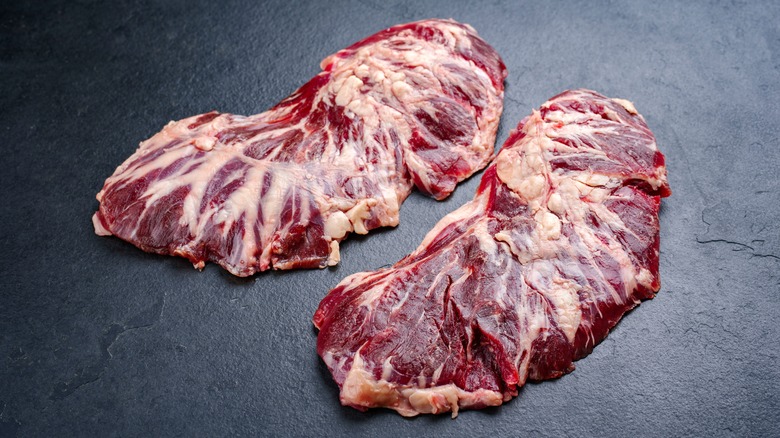Why Oyster Steak Is Such A Difficult Beef Cut To Find
For many, oyster steak is an unfamiliar term, and that's not surprising, considering it's a difficult cut to find. Oyster steak — known as spider steak in Australia – got its name in America from its shape, which is reminiscent of an oyster shell with its wavy edges. While it doesn't look like a spider, its fat tissue does, forming a branching pattern similar to a web. The cut is found on the back of each hip bone on the hind of the cow.
The reason why oyster steak is hard to find is that most butcher shops receive only the eight primal cuts of meat, like loin and round, divided into their subprimals, such as beef tenderloin (from the loin) and top round (from the round). As oyster steak isn't part of the main primals, most butchers don't receive it. There also aren't many oyster steak cuts available because it's small, and each cow only has two. This means they run out quickly — if you can find a shop that carries them.
How to find the rare oyster steak cut
The best places to search for oyster steak are butcher shops that use all parts of the animal, also known as nose-to-tail butchery. These butchers receive whole beef hinds instead of subprimals, but these shops are becoming harder to find. While there are many reasons to consider buying meat from local butchers, supporting them helps keep the practice alive and cuts like oyster steak available. Butchery is a skill passed down from generation to generation and takes years of development, which the fast-paced meatpacking world of today is leaving behind. With fewer butchers trained on these rarer cuts, oyster steak often ends up being put into ground beef.
Oyster steak is more economical than other tender cuts like filet mignon and a cheaper way to try wagyu beef. Though it may be difficult to find now, it may not be the case for long. With new technology, changing customer demands, and resurgent interest in butchery, local butchers are experiencing a revival. To help businesses thrive, butcher shops are now pairing with grocery markets and cooking classes, and it's a good sign when local butchers sell more than just raw meat.
How to prepare and cook oyster steak
What makes oyster steak great is its web-like marbling, giving it a tender mouthfeel. Because the cuts are so small, it's best to serve this cut between a few people, like for a date night, rather than a large gathering. Though delicious enough on its own, consider prepping oyster steak with smoky or slightly bitter rubs like a barbecue, coffee, or cocoa-cumin rub for additional flavor. For marinades, a simple steak marinade will do, though many other great marinades will up a home cook's steak game.
Cooking oyster steak is similar to preparing flank steak: It is extremely tender, so use a meat thermometer to be sure not to overcook it. It's recommended to cook it on the stovetop or grill, specifically on high heat. Three to four minutes per side until medium rare should do — much longer than that and it will become chewy. Broiling is also a great method for cooking oyster steak. After cooking, let it rest in foil for 10 minutes. When serving, cut against the grain and consider pairing with chimichurri sauce, dijon mustard, herb salsa, or horseradish to add extra zing to the meal.


